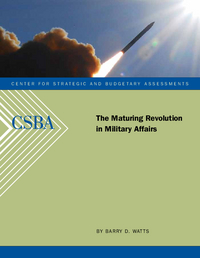
In 1992, the Office of Net Assessment (ONA), Office of the Secretary of Defense, began circulating an assessment of a prospective late-twentieth-century military-technical revolution (MTR). Soviet military theorists had been discussing the possibility of a third twentieth-century revolution in military affairs (RMA) since the mid-1970s. Written by (then Army Lieutenant Colonel) Andrew F. Krepinevich, ONA’s MTR assessment sought to explore the hypothesis that Soviet theorists were right in predicting that advances in precision munitions, wide-area sensors, and computerized command and control (C2) would bring about fundamental changes in the conduct of war. As Marshal Nikolai Ogarkov, then chief of the Soviet General Staff, observed in 1984, these developments in nonnuclear means of destruction promise to “make it possible to sharply increase (by at least an order of magnitude) the destructive potential of conventional weapons, bringing them closer, so to speak, to weapons of mass destruction in terms of effectiveness.” The Soviets introduced the term “reconnaissance-strike complex” (or “RUK” from the Russian pекогносцировочно-yдарный комплекс) to describe the integration of missiles with precision-guided sub-munitions, area sensors such as the airborne Pave Mover SAR/MTI (synthetic-aperture radar/ moving-target-indicator) radar, and automated C2.



























